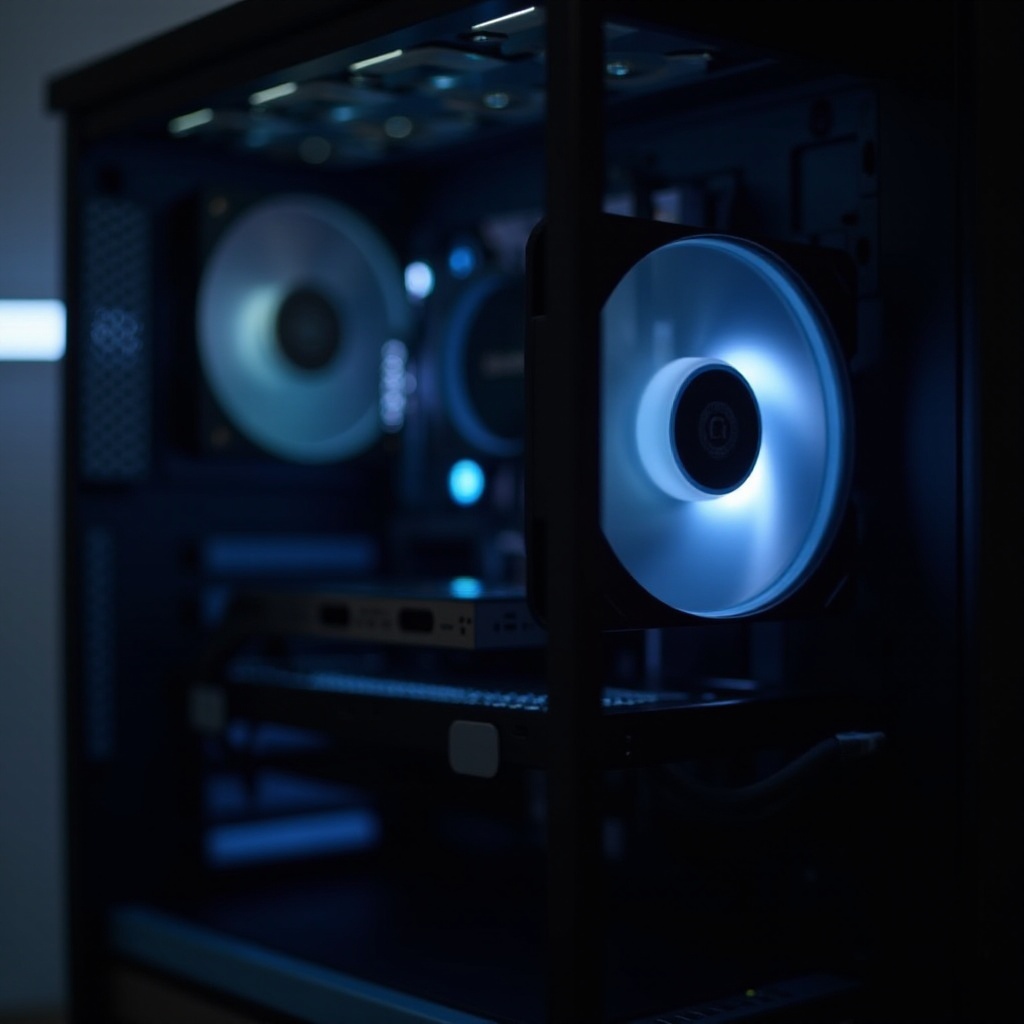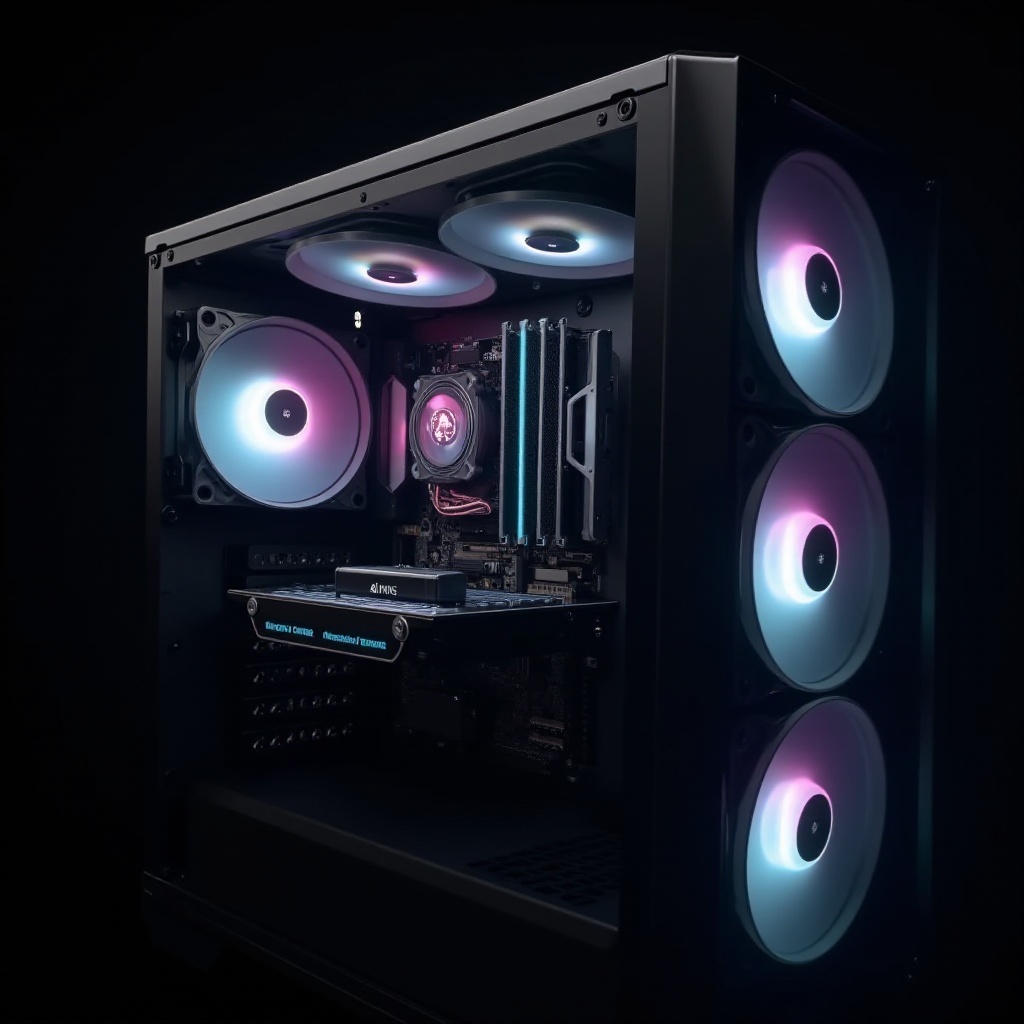Introduction
For PC enthusiasts and casual users alike, managing PC case fan speed is integral to maintaining both optimal performance and system longevity. Proper control over fan speeds not only ensures your system runs cool under heavy workloads but also helps achieve a comfortable noise level in your environment. Whether you’re a new builder or an experienced user, this guide will equip you with the knowledge to take control of your PC’s cooling system. We will explore the significance of PC case fans, the rationale behind fan speed adjustments, and methods to manage these speeds effectively.

Understanding PC Fans
To make informed decisions about fan speed control, it’s essential to understand the different types of PC fans and their roles in cooling your system.
Types of PC Case Fans
PC case fans are primarily categorized into two types: airflow fans and static pressure fans. Airflow fans are optimal for enhancing ventilation by moving air through the case quickly. In contrast, static pressure fans excel at directing air through tight spaces like radiators or heatsinks, maintaining speed even under pressure.
Role of Fans in Cooling
Fans are crucial in maintaining the temperature of internal components, thus avoiding overheating and performance throttling. This is particularly important during high-performance tasks, such as gaming or video editing. Effective fan speed management ensures thermal conditions remain stable, enhancing overall system performance and durability.
Why Control Fan Speed?
Adjusting fan speeds offers multiple benefits, impacting both the performance and longevity of your hardware.
Balancing Noise and Performance
High fan speeds often result in increased noise levels, which can disrupt your work or play environment. By managing fan speeds, you can significantly reduce noise while maintaining effective cooling, creating a tailor-fit balance for your preferences.
Enhancing Hardware Longevity
Efficient fan speed management can prolong the life of your computer components. By keeping them within safe operating temperatures, you reduce the risk of thermal damage and save money on potential replacements.

Accessing BIOS/UEFI for Fan Control
For those inclined towards hardware-level adjustments, BIOS or UEFI settings provide direct control over fan speeds. Here’s a straightforward guide to accessing these settings.
Steps to Enter BIOS/UEFI
- Restart your computer.
- During the boot-up sequence, press the designated key (such as Delete, F2, or Esc) to access the BIOS/UEFI setup.
- If unsure of the specific key, consult your motherboard’s manual or the manufacturer’s website.
Navigating Fan Control Settings
Within the BIOS/UEFI interface:
- Go to the hardware monitoring section, often found under ‘hardware monitor’ or an ‘advanced’ tab.
- Locate the fan control settings.
- Adjust fan profiles or configure speed settings based on thermal zones or direct temperature readings.
This method offers straightforward control without the need for additional software, though options can vary depending on the motherboard model.
Software Solutions for Fan Management
For those who lean towards software solutions, many applications provide advanced features and user-friendly interfaces for fan speed control.
Overview of Popular Fan Control Software
Popular fan control applications like SpeedFan, MSI Afterburner, and Corsair’s iCUE offer intuitive interfaces to adjust fan speeds. These tools often come with features to create customized profiles, monitor temperatures, and automate fan speed changes.
Step-by-Step Software Setup Guide
- Download and install your chosen fan control software.
- Open the program and allow any necessary permissions for hardware access.
- Explore the interface, noting available settings for fan speeds, temperature readings, and customizable profiles.
- Adjust your fan speed settings as desired, opting for manual control or automated profiles based on temperature thresholds.
Pros and Cons of Software Control
Pros:
– User-friendly interfaces
– Extensive customization features
– Access to temperature monitoring and alerts
Cons:
– Software compatibility can vary
– Regular updates might be needed
– Potential learning curve for beginners

Manual Fan Speed Control Methods
For individuals who prefer a hands-on approach, manual fan speed adjustments allow for direct modification without relying on digital interfaces.
Installing Fan Controllers
Physical fan controllers can be installed into your PC case, enabling manual speed adjustments. Generally, these devices connect to motherboard fan headers and feature dials for immediate speed changes.
Manual Adjustment Techniques
To manually alter fan speeds, you can connect fans directly to the power supply, use voltage reducers, or employ built-in motherboard headers with manual control features.
Tips for Optimizing Fan Performance
Ensuring continued fan efficiency over time involves maintenance and strategic placement.
Cleaning and Maintenance
Prevent dust buildup which can degrade performance and increase noise by:
– Regularly cleaning your PC case using compressed air.
– Checking fans for dust and debris during routine cleanings.
Ensuring Proper Airflow
Optimize cooling efficiency through strategic fan placement. Use a balanced configuration of intake and exhaust fans to maintain optimal airflow, minimizing hotspots and maximizing overall cooling.
Conclusion
Mastering the control of your PC case fan speed is crucial for maintaining a harmonious balance between performance and noise, as well as extending the longevity of your system. Whether you prefer BIOS/UEFI adjustments, software tools, or manual methods, a variety of options are available to keep your PC operating coolly and efficiently.
Frequently Asked Questions
Can I damage my PC by adjusting fan speeds too much?
Yes, setting fan speeds too low can lead to overheating, while excessively high speeds might cause wear over time.
What is the ideal fan speed setting for gaming?
A suitable fan speed maintains effective cooling without producing excessive noise, generally aiming for a middle-ground setting.
How often should I clean my PC fans to maintain performance?
Cleaning PC fans every three to six months is advisable, depending on the operating environment.